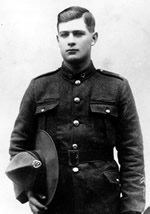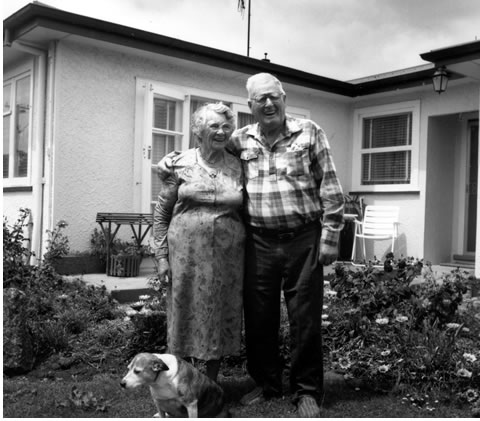Sidney George Stanfield (Stan) was born in Tinui, near Masterton, in 1900. He worked as a farmhand before sailing for war in 1916 with the Wellington Infantry Battalion. He saw action in France and Belgium and at the end of the war was still nearly two years under the age limit for service overseas.
Hear Stan describe his experiences at Passchendaele at the time of the October 1917 offensive.
Transcripts
These extracts of oral history have been edited to facilitate reading / listening.
On being a stretcher-bearer at Passchendaele 12–14 October 1917
It rained and rained and bloody rained, and rained and rained, see. Just like here in the autumn time, when it comes to rain and it was cold. And we were picking them up from a gathering point as a regimental aid post. Well there were hundreds of men laying out, around. You couldn’t get them inside, it was an old German concrete emplacement and you couldn't get them all inside, but the doctors were working inside. And they were just laying around where they’d been dumped by the stretcher-bearers from off the field and at one period I believe there were 600 stretcher cases laying round the place in the wet and cold, just dying there where they were dumped off. They weren’t even laying on stretchers, just laying on the ground with an oil sheet tied over them if anyone thought to do that, or if one of their mates could do it. Just laying there, because the stretchers were used for picking up other men, you see, there couldn’t be a stretcher for every stretcher case. We just carried till you couldn’t carry more. You just went until you couldn’t walk really, you just went until you couldn’t walk.
On how infantrymen saw themselves at Passchendaele
An ordinary infantryman at Passchendaele was a pretty dumb beast. That’s how he’s treated, you see. He was only gun fodder and when all is said, and that’s what I feel. We were pretty dumb beasts you see, or we wouldn’t have been slapped, thrown into that sort of warfare, because it was hopeless before you started. We all knew that.
How men died
And poor Jim was laying there cuddled up in a heap as men die. Don’t forget we was all young, we didn’t die easy. You don’t die at once, you’re not shot and killed stone dead. You don’t die at once. We were all fit and highly trained and of course we didn’t die easy, you see. You were slow to die and you’d find them huddled up in a heap like kids gone to sleep, you know, cuddled up dead.
Wounded men at Passchendaele
There was one place at Passchendaele … where we heard a man crying at night out in front and went out and we couldn’t find him and we heard him crying part of the next day. Calling, you know, calling, sort of crying, not screaming or anything, crying out. We just knew there was a wounded man lying down under something you see. We never found that man. That's the only thing that's stuck in my memory. The others, I’ve seen them lay gasping and panting and scratching up the dirt with their fingernails on their face and all crawling around semi-delirious and all sorts of things.
His feelings about the misery of the war
I felt that the war was never going to end. It was going to go on forever. I felt that I would never see the end of the war, that it was not possible. I felt it was not possible that I would survive the war … I can remember feeling at times that I’d be quite happy to engage in any sort of slavery at all if I could be taken away from this, what, misery. Misery.

Sidney Stanfield in 1918.

Mr and Mrs Stanfield.

Community contributions